Getting to the “ocean bottom” of seismic activity | Discover Our People
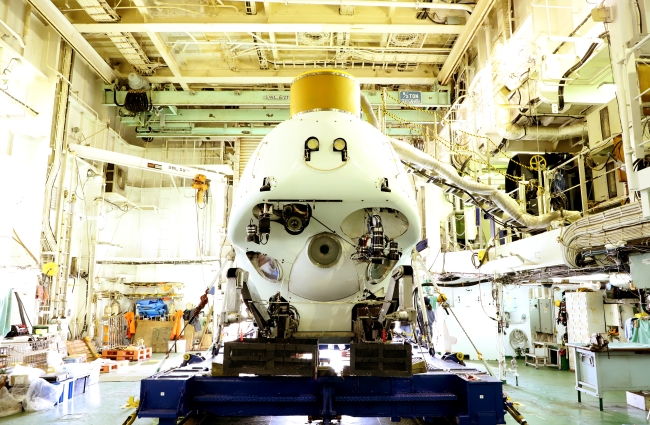
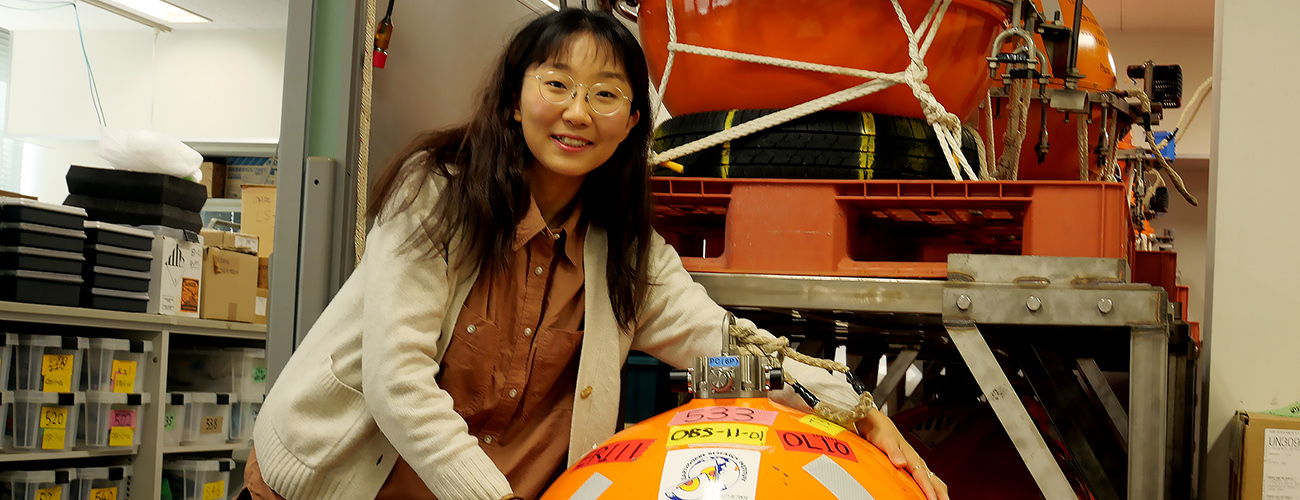
-
- HyeJeong Kim
- Second-year doctoral degree student, Earthquake Research Institute / Graduate School of Science
Area of research: Seismic structures
Country/Region of origin: South Korea
HyeJeong Kim’s “journey in seismology,” as she calls it, was sparked by her interest in the field following the 2011 Great East Japan Earthquake and grounded in her fascination with earth science as a high school student in South Korea. What keeps her on this journey is a desire to help people and have a constructive impact on the world. As a student in the Earthquake Research Institute (affiliated with the Graduate School of Science), HyeJeong works to formulate a method for separating seafloor sediment signals from the data gathered by ocean bottom seismometers. She hopes her research leads to more accurate data analysis, which would give scientists a better understanding of where earthquakes occur. “Since earthquakes are hazards, if we understand their origins, we could influence society in a positive way,” she explains.
The journey begins
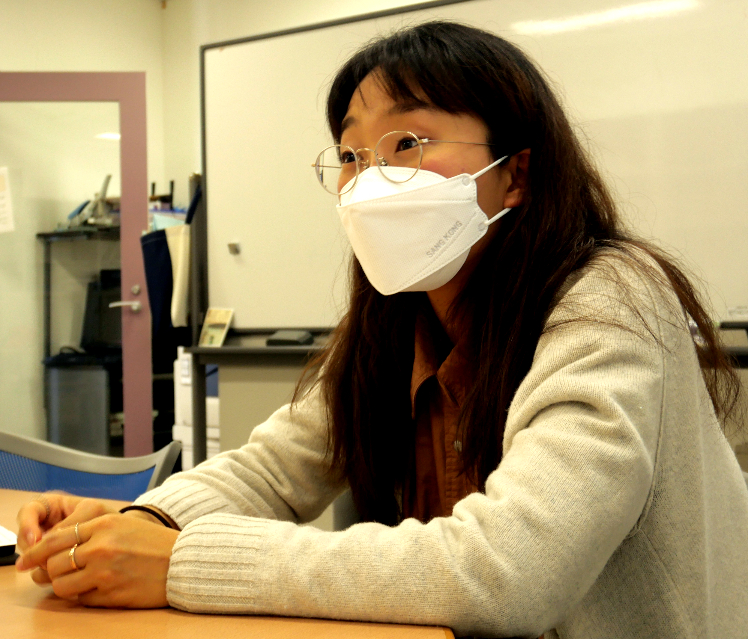
In her first month of high school in South Korea, some earth-shattering news changed HyeJeong’s life. It was March 2011, and the Great East Japan Earthquake — a magnitude 9.0 earthquake, followed by a giant tsunami and nuclear accident — had just occurred. Reading about the massive disaster in a neighboring country profoundly affected HyeJeong, who relates that it was a “huge shocking experience.” From that point, HyeJeong grew interested in understanding how earthquakes occur, and aspired to become someone who could contribute to mitigating their impact.
Harboring a longtime fascination with earth science and a fondness for plate tectonics and analyzing numerical data, HyeJeong thus decided to study seismology in university. She realized that going into seismology “could be a way to become the person that I dreamed of,” she says, acting as a positive influence on society by helping to reduce disasters.
Meanwhile, she had another long-cherished dream — that of studying abroad. A friend of her undergraduate supervisor at Seoul National University recommended studying in Japan, and introduced the Open Application Program of the Sakura Science Exchange Program, a three-week internship offered by the Japan Science and Technology Agency. Before her mentor’s suggestion, HyeJeong had not considered studying in Japan, but his assurance that there were many good seismologists and institutes to learn from in Japan convinced her to participate in the program.
The internship took place at UTokyo’s Earthquake Research Institute (ERI) in the summer of 2016. There, HyeJeong studied waveforms recorded by ocean-bottom seismometers (OBSs) that were part of the Normal Oceanic Mantle, or NOMan, Project, which used seismometers to study the ocean floor in the northwestern Pacific Ocean. She was impressed with the facilities, the seismometers, and most of all, the professor supervising her internship, Hitoshi Kawakatsu. “I had to meet him every day, and sometimes twice a day. But seeing that professors spend a lot of time on students who are just visiting for three weeks gave me a very good impression,” she says.
Coincidentally, Kawakatsu authored a paper on seismology that had influenced HyeJeong as an undergraduate. Being unfamiliar with Japanese names, however, she did not make the connection until she got to know Kawakatsu through the internship. When she realized that he was the author, HyeJeong gushes that “I felt like I met my favorite celebrity.” So when Kawakatsu suggested that HyeJeong pursue her graduate studies at UTokyo, she readily agreed.
She applied to UTokyo through the Global Science Graduate Course, a five-year combined master’s and Ph.D. program in the Graduate School of Science, and returned as a full-time student in September 2017. While affiliated with the Graduate School of Science, she is based at the ERI, with Kawakatsu and Associate Professor Nozomu Takeuchi as her supervisors.
The search for a sediment-separating solution
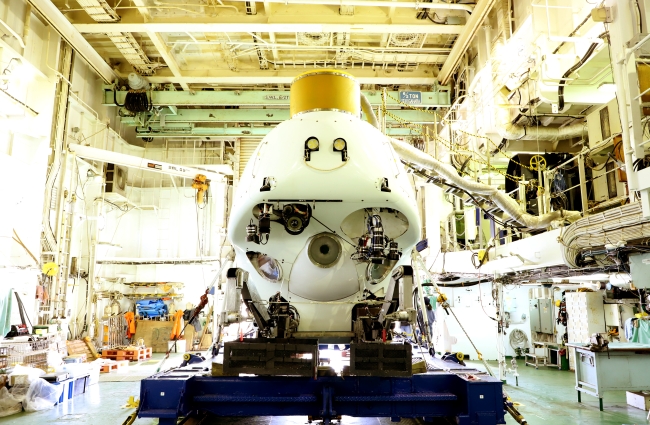
As part of her research activities, HyeJeong went to see the Shinkai 6500, a manned submersible that is used to conduct deep-sea research.
As a graduate student at UTokyo, HyeJeong studies how to separate seafloor sediment signals from the data recorded by ocean-bottom seismometers, focusing on OBSs placed off the coast of the Tohoku region in northeastern Japan and the Pacific seafloor. She hopes to formulate a more accurate method for analyzing data gathered by the instruments, and thereby contribute to better insight into seismic structures. The seismic structure of an area refers to its underground structural composition, and is a key factor to understanding where earthquakes can occur.
Until recent years, seismologists had relied mainly on land-based seismometers for researching seismic structures due to challenges experienced when using OBSs. Currents cause sediment to move across the ocean floor, which interferes with data that OBSs collect. However, there are also limits to the data obtainable by land seismometers. Subduction, in which one tectonic plate goes under another and causes seismic activity, happens at the bottom of the ocean. Moreover, around 70% of the Earth is covered by ocean, and it is necessary to use OBSs to determine what goes on in that 70%. Thus, recently seismologists have pushed to increase both the number of OBSs deployed, as well as the accuracy of data recorded by them.
That’s where HyeJeong comes in. She writes programming scripts to analyze, calculate and process previously collected data from around 150 OBSs and land-based seismometers. Her days are mostly spent in the lab on a computer, but sometimes she goes on fieldwork cruises as well.
The ERI conducts a large-scale project called Pacific Array, in which OBSs are deployed in different parts of the Pacific Ocean. HyeJeong participated in one of the project’s cruises, departing from Guam to release 12 seismometers and then recover them a year later. Since HyeJeong analyzes data collected from such OBSs, the two 10-day trips provided her with a perspective on seismology research that she would not be able to get from the lab on land. Touched by her experience, she resolved to continue contributing to such projects in the future. “I felt very thankful to the previous scientists who made that project and who deployed and recovered all the data,” she says. “I want to volunteer for such fieldwork if possible to give other people the chance to use good data.”
HyeJeong planned to go on a similar expedition last year, but due to the COVID-19 pandemic, it has been delayed indefinitely. However, she was able to take a short research cruise around Japan on the research vessel YOKOSUKA, which houses the Shinkai 6500, a submersible that is used to deploy some types of OBSs and conduct other deep-sea research. She hopes for more fieldwork opportunities this year.
Striving to be a positive influence
HyeJeong finished classes last semester and is now focused on her research, meeting regularly with her professor and group members for discussions. The research group supervised by Kawakatsu includes six people, of which three are students, including HyeJeong. The professor meets with students individually once a week, and every Friday the students and the professor get together to have a coffee break and talk about their research. (These meetings are currently all held virtually.) Kawakatsu retired recently, but will continue to supervise HyeJeong’s research.
In addition to enjoying exercising and photography in her spare time, HyeJeong does volunteer translations, providing English subtitles for videos posted by a Korean medical YouTube channel. She picked up this unique hobby during Japan’s state of emergency declaration period last year, as it was a way she could help people while staying at home. Drawing from her own experience visiting hospitals as a non-Japanese speaker in Japan, she wants to give South Koreans living outside South Korea, as well as non-Korean speakers living in South Korea, English translations of medical information to help them communicate with medical professionals and others. She has gotten comments from viewers saying that thanks to her subtitles, they were able to talk about their medical conditions with non-Korean speakers, which to HyeJeong was “very moving.”
HyeJeong’s Ph.D. topic will either be a continuation of her master’s thesis, which focused on data obtained from OBSs in the Tohoku region, or an analysis of data from the OBSs that she helped deploy and recover during her work in the Pacific Array project. Whichever case, her goal as a seismologist is to be well-versed in both in-lab analysis and on-site fieldwork. “It’s rare to find a person who does both, but I want to become a person who does a good job in both,” she says. HyeJeong plans to graduate in September 2022, after which she wants to keep researching. So far, seismology has taken her from Seoul to Tokyo, and from Tokyo to the middle of the Pacific Ocean. With her desire to help people leading the way, it will be interesting to see where HyeJeong’s journey in seismology takes her next.
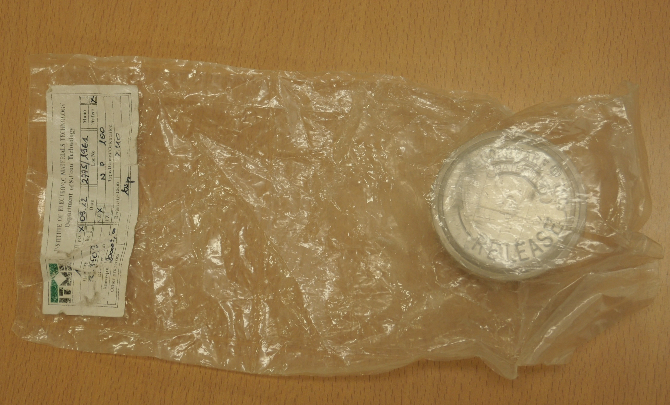
Silicon wafer
Experiments on a small wafer connect with research on the entire Earth
HyeJeong carries this silicon wafer with her everywhere she goes. She received it as a present from her teacher after studying it for her high school graduation project. Due to the particular properties of the crystal structure of silicon, waves pass through the material at different velocities based on the directions the waves are coming from. This condition, in which properties of a material vary by direction, is called anisotropy. HyeJeong conducted experiments on this wafer to discover its anisotropy, and she says her research on this small wafer connects to what she is studying today: “Anisotropy also exists within the Earth, and it is an important key to understanding tectonic plate movement,” she explains.
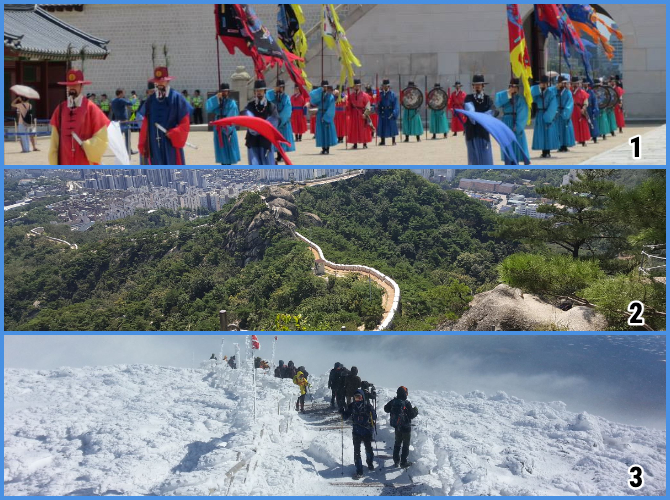
Seoul and Mount Halla
South Korea’s historic capital and highest peak
A modern city full of skyscrapers, Seoul has been the capital of South Korea since the Joseon Dynasty (1392–1910), so it is also replete with historical landmarks. HyeJeong lived in Seoul during her years as an undergraduate, and in her student days, she enjoyed walking around those historical sites. One such site is Gyeongbok Palace, where the changing of the guards ceremony (1) takes place regularly. Surrounding the city is the Seoul City Wall (2), initially built in 1396 to protect Seoul from invaders. Outside of Seoul on the southern island of Jeju is Mount Halla, South Korea’s largest volcanic mountain and its highest peak. HyeJeong climbed Mount Halla right after it snowed so she could take pictures, including the one shown here (3). An aficionado of nature, photography and history, HyeJeong loves the variety of awe-inspiring and scenic locations her home country has to offer.
Interview / Text: Whitney Matthews






